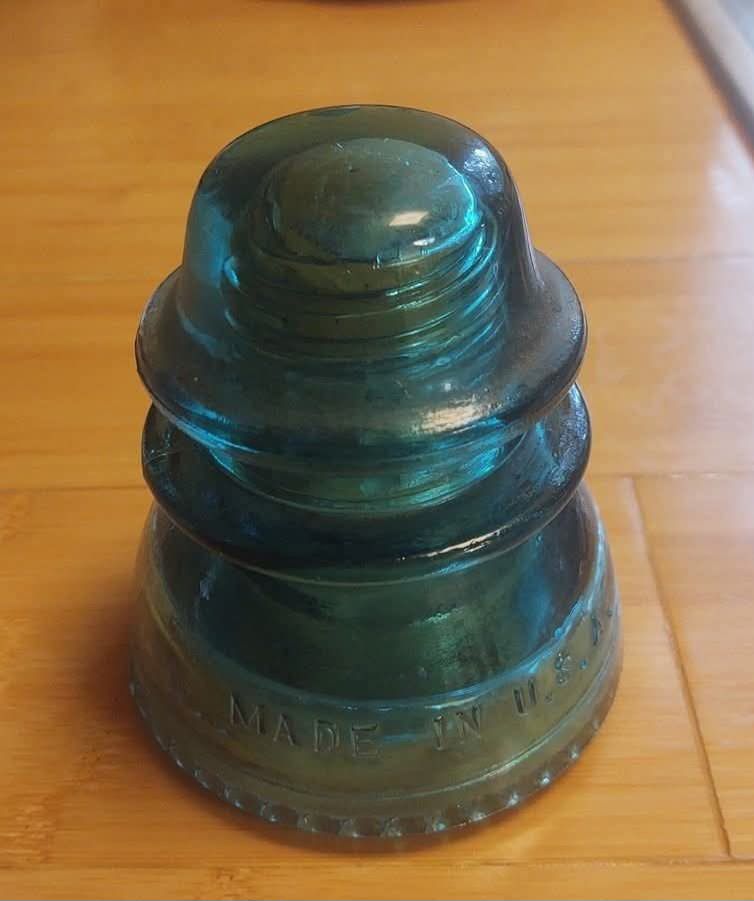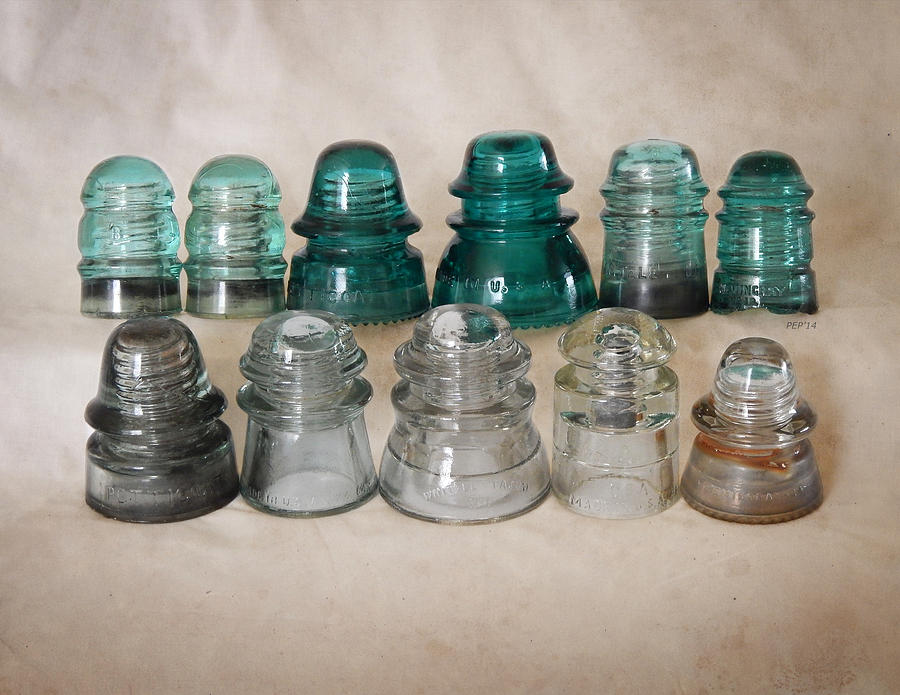Echoes in Glass: The Forgotten Beauty of the Power Age
At first glance, it looks like a simple chunk of blue-green glass—smooth, solid, almost decorative. But this small object once carried the weight of progress itself. It’s a glass insulator, a humble yet revolutionary invention that powered the rise of modern communication and electricity.
A Symbol of the Industrial Century
During the late 19th and early 20th centuries, when telegraphs, telephones, and electrical lines were first stretching across continents, engineers faced a major challenge—how to keep high-voltage wires from grounding out on wooden or metal poles. The solution came in the form of glass insulators, ingeniously designed to isolate electric current while withstanding rain, heat, and freezing temperatures.

Mounted atop power poles, these small domes of glass were the silent sentinels of the electrical age. Every time a telegraph clicked, a phone rang, or a streetlamp flickered to life, insulators like this one played a part in carrying that current safely through miles of wire.
How the Glass Insulator Worked
Simple yet brilliant, each insulator served as a barrier between live electrical wires and their supporting poles. Here’s how its components functioned:
- Material Strength: Made from thick, durable glass, they could endure decades of harsh outdoor conditions without cracking or warping.
- Shape and Design: The unique double-ridge or “hat” shape prevented rainwater from forming a continuous path from the wire to the pole, minimizing electrical leakage.
- Threaded Core: The interior was designed to screw securely onto a wooden or metal pin atop utility poles, ensuring stability even in strong winds.
The result was a near-perfect combination of form and function—strong enough to carry electricity, yet crafted with a clarity and symmetry that made them works of art in their own right.
Video : The Glass Insulator, what is it?
Why They Shimmered in Blue and Green
Most glass insulators came in shades of aqua, turquoise, or emerald—not by design, but by chemistry. The raw materials used in early glass production contained trace minerals like copper, iron, and chromium, which gave each batch its distinct hue.
Collectors today prize these subtle variations in color. Some rare insulators even have purples, ambers, or deep cobalt blues, depending on the impurities and the glassworks that produced them. No two were quite the same.
From Utility to Artifact
By the 1950s and 1960s, technological advances began to replace glass insulators with porcelain and composite materials that were lighter and more efficient. Miles of glass insulators were removed from service, and what once symbolized progress was suddenly obsolete.

But rather than vanish, these relics found new life. Collectors and artists discovered their nostalgic charm—the way they caught sunlight on a windowsill, the craftsmanship of their curves, the quiet hum of history in every bubble trapped within their glass.
Today, they’re cherished as vintage industrial art, used in home décor, upcycled into lamps, chandeliers, and garden ornaments. For some, owning one is like holding a piece of the early electrical revolution in their hands.
A Connection Between Past and Present
There’s something poetic about a glass insulator. It once connected towns, voices, and families through electric lines stretching over hills and rivers. Now, long retired, it connects us to the memory of that innovation—an age when invention carried a sense of wonder, and every utility pole symbolized human progress.
To the people who remember those early years, these glass caps were more than hardware. They were milestones—literal beacons of the modern world glowing in the sun along railroad tracks and rural roads.
Video :Glass Insulator Hunting Adventure!!! (2025) 100 Year Old Treasure!
Conclusion: The Beauty That Endures
This small, gleaming insulator reminds us that even the most functional tools can hold a kind of quiet artistry. It represents an era when technology was tangible—when every invention was made to last, not just to be replaced.
So, the next time you come across one of these glass relics in an antique shop or tucked away in a grandparent’s shed, look closely. You’re not just holding a piece of glass—you’re holding history itself, refracted through the color of progress.